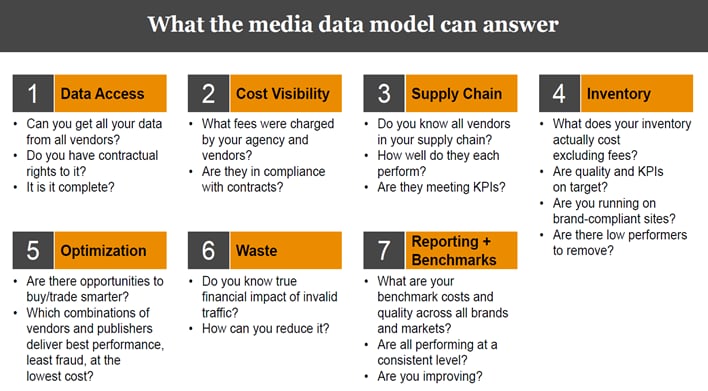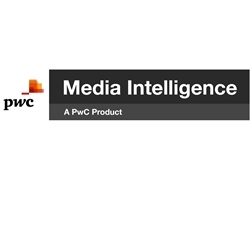Let's talk about campaign data. We know waste is significant in the current paid media ecosystem—wasted dollars account for up to 74% of total media spend, a study conducted by ISBA and PwC estimated.
We also know that advertising is in the middle of a fundamental transformation. Transparency, trust, and privacy are significant concerns; technology proliferation and regulatory changes are happening all of the time. Media effectiveness has never been more at risk.
At a time when clicks are more elusive to measure than ever, many brands are wasting money on outdated models within the media spend landscape—and they're looking for a way out.
Marketers should look beyond campaign-level data
Complicated by expansive channel growth and a complicated and crowded martech vendor landscape, marketers have all but lost the ability to make real-time decisions. The scale and complexity of data generated by digital advertising programs are impossible for humans to sift through and optimize.
Beyond collecting total data—more than just KPIs, total clicks, and costs overall—brands should build a foundational media data model to build better insights.
To bring a media data model to life, marketers should take two core actions.
1. Create a single source of truth
Collecting data is important, yes, but keeping track of potential data loss in making critical decisions has merit, too. Marketers sometimes move from one channel on one day to a different channel on another, potentially leaving that information locked away and forgotten.
Fragmented data can be a huge source of frustration. To mitigate that issue, all data and analytics should be in one place and should go beyond campaign-level impressions, spend, and other essential metrics.
Housing spend and performance data—including insertion orders, campaign metrics, and more—in one place means that understanding your media spending could take significantly less time and drive better vendor relationships.
2. Integrate your technology
New technology partners can be added daily while old ones fall off the plan. Once all integrations are in, you can start performing ongoing optimizations versus a single lookback audit at the end of a campaign. You're not getting the whole story just because you hit a campaign KPI, such as cost per click. Could you have done better?
Stock portfolios must be rebalanced for maximum growth, and the same goes for media plans. Would you hold on to a stock just because it hit your 10% return goal, especially if that stock has become over-valued?
When you have all of your media in one place, you can track every dollar and tactic across vendors and partners. If vendors hold up their end of the bargain, you can evaluate, manage, and negotiate the supply chain.
So, what's at stake?
A foundational data model can uncover the impact of fraud and invalid traffic. It can evolve into an outcome-based model, such as the ability-based model, by incorporating and looking beyond campaign data.
You can view percentages of impressions as fraud or non-viewable, but what about dollars? When you create a connected data model, dollar amounts and buying paths where fraud and viewability issues persist become viewable, versus a current model that only extrapolates on averages.
Furthermore, a connected data model all enables you to understand what fees your partners and vendors charge so you can see whether they are in compliance with contracts.
Building a foundational media data model starts with assessing your current state. There are seven areas to focus on that can help brands unlock millions in media spend. Recognizing those specific areas allows brands to understand how they're spending and what they're spending on as a whole.

You can analyze what you're doing today. Knowing what you're trying to achieve makes the difference here.
There are three main data types that provide varying levels of visibility.
Excel and CSV feeds
Data in these feeds can include username, location, created date, etc. They are fundamental ways to capture information, but they don't provide the most transparent picture. If a campaign ran for three months, you would see data, but in an overview at best.
Things you can do with Excel feed data:
- Analyze cost and performance KPIs
- Assess campaign-level performance at scale
- Compare with ad server for discrepancy reporting
Brands can save 10-15% just by building a CSV data model.
API Integrations
API data insights pick up where Excel feed data leaves off. The API is designed with the end-user in mind. The data can be drilled down further and visualized for better opportunities.
Things you can do with API data:
- Analyze cost and performance KPIs to performance level and more
- Build benchmarks and indices across markets and brands
- Assess limited supply chain data
- Analyze creative and audience data
Brands can save 15-25%, which can then be reallocated—although not all API feeds are created equal, so understanding the depth of the API's capability is critical.
Log Files
This is impression-level reporting and tracks impression cost as well as performance (whether the impression generates a click or not). Log files can help you see the entire supply chain, and they can break down nuance with reporting capabilities that you can use to...
- Create custom whitelists or blacklists
- Know the cost of fraud, non-viewability, and brand safety calculations
- SPO using primary and secondary KPIs
- Create contextual domain lists based on performance metrics, i.e. looking at the complex data of what's not working, what's blocked, or what's a waste of money
This method can save companies over 25% in media value, sometimes up to 50-60%.
Log files aren't easy to manage, however. Some tools, such as PwC's Media Intelligence, can help unpack the granularity of data and provide precise analyses and specific recommendations. It combs through billions of rows of data to consolidate log files, then presents aggregated data that illuminates key information for improving the value of your campaigns.
Once you learn how to mine your data, you can report on it, which will inform your media data models and future goals. Because log file data is so deep, you can forecast trends, make plans for the future, and create customized analytics.
But first you must understand where you are in your journey.
Create an action plan for your media data model
What's the smartest path toward more effective media spend? Some of this can be handled immediately, whereas other things will take time. Consider three sets of actions.
The right now:
- Identify the current gaps.
- Prioritize impacted cases.
- Create reporting automation when necessary.
- Find those quick wins.
Design for the future:
- Evaluate capability needs.
- Build strategy and road maps.
- Identify integrations.
- Define and launch a POC.
Build and innovate:
- Invest and build enabling capabilities.
- Optimize marketing models.
- Measure effectiveness.
- Keep a pulse on change.
You have options You can build in-house or buy the software. Then you can start to realize a new journey of trust, optimization, and automation in digital media.




